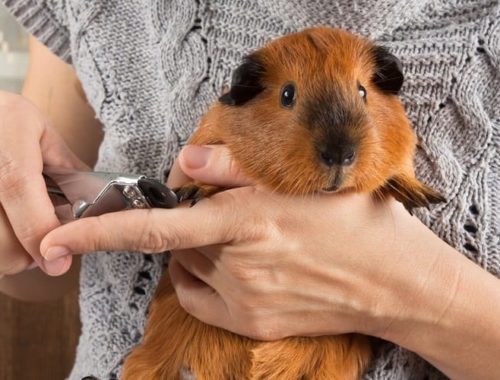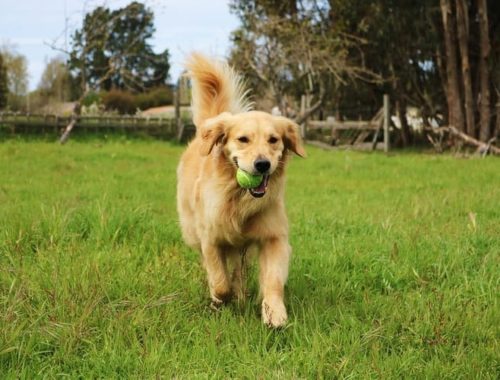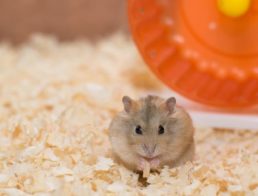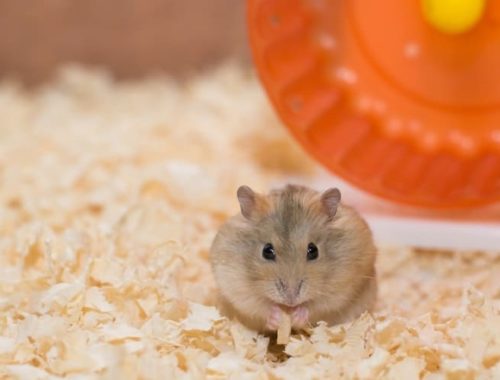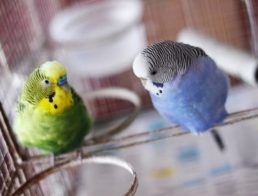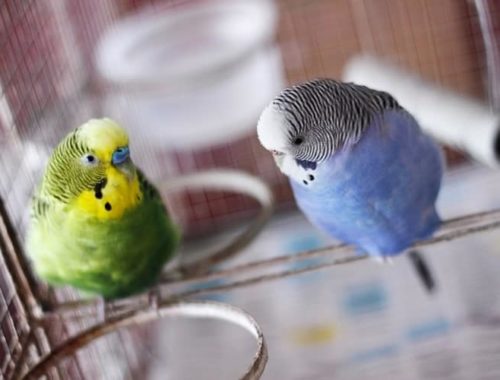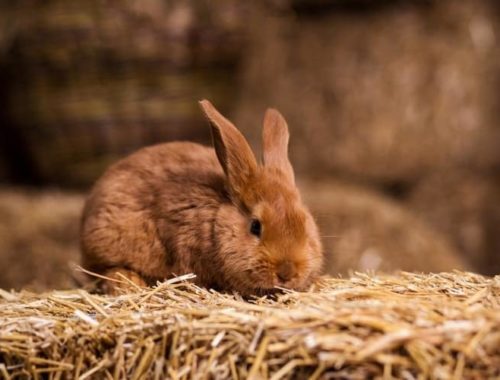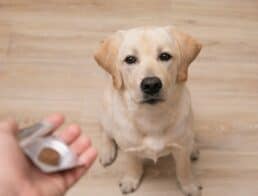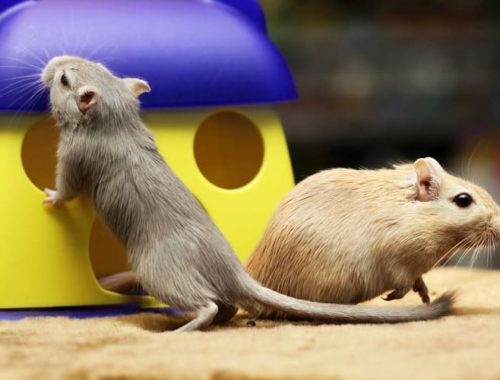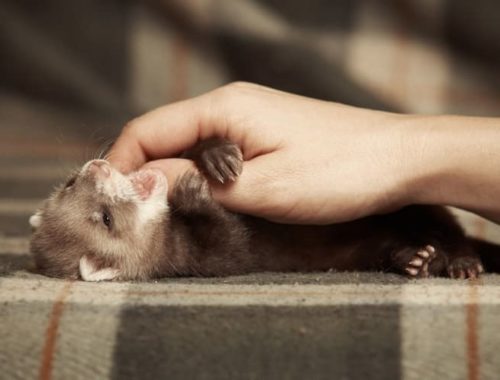Mice can make adorable and fun pets for adults and children alike. They can be trained to be friendly and they are kept in a cage or aquarium, so they are ideal for apartment-dwellers or people who are looking for a low-maintenance pet that will provide them with affection and entertainment for one to two years, which is the lifespan of the average pet mouse.
How to Set Up for Your Mouse
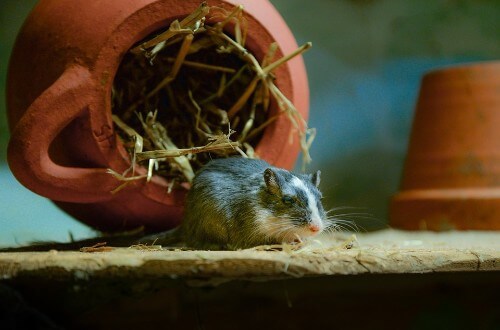
- Purchase an enclosure for your mouse. Mice are notorious escape artists, so it is important to choose an enclosure that won’t allow them to escape easily. The best choice is a 10-gallon (or larger) aquarium or a cage with wires placed no farther than 1/4″ from one another. The cage should be at least 24 x 12″ in width and length, and it should have a top. The bottom wires should be covered by a plastic tray for comfort.
- Buy a food dish. You will need to clean out the food dish regularly, so choose something that is sturdy enough to withstand frequent washing. It is helpful if the food dish is hard to flip over since your mouse will be burrowing around and could kick over a lightweight bowl.
- Buy a water bottle. A water bottle that attaches to the side of the cage or aquarium is a must. Look for one specially made for mice and other small rodents. A water bottle made for a rabbit might be too hard for your mouse to drink out of because the ball bearing is relatively large.
- Buy toys for your mouse. Your mouse will need something to do to entertain himself, so toys are the answer. You can buy mouse toys or you can use things like toilet paper tubes and sections cut from a cardboard egg carton. Your mouse will need something to chew on; wood and cardboard are great for this purpose.
- Choose bedding for your mouse. The best bedding for mice is aspen shavings. They will also tolerate maple, birch, and poplar shavings but not cedar shavings. Do not use corn cob litter, but you can use dust-free pellet bedding or bedding made from paper. You can add alfalfa hay to the bedding but don’t use that as the primary material.
- Purchase a running wheel and a hidey-hole for your mouse. Your mouse will need a place to run, and a running wheel is the best solution. He will also want to hide. You can purchase a hiding spot for your mouse, or you can use some type of container or cup that provides a place for him to hunker down out of view.
How to Feed Your Mouse
- Feed your mouse pellets or cubes. Purchase a commercial mouse food. They usually come as pellets or cubes. Make sure you change the food out daily, throwing away what has sat in the bowl for a full day.
- Feed your mouse fruits and vegetables. Your mouse can eat small amounts of fresh fruits and veggies. Consider apples, bananas, pears, broccoli, cabbage, berries, carrots, and tomatoes.
- Offer your mouse occasional treats. Treats like cooked pasta, some unsweetened breakfast cereal, and pieces of bread can be offered occasionally and in very small amounts. You can also purchase commercial treats.
- Avoid giving your mouse seed mixes. Don’t give your mouse seed mixes. This is because she will pick out the seeds she likes most, ignoring the rest, and this can lead to malnutrition.
- Make sure your mouse has fresh water at all times. Check her water bottle at least twice per day to be sure there is enough in the bottle and that it is clean and fresh.
How to Pick Up Your Mouse
- Use a tube or a cup to pick up a frightened or untamed mouse. If your mouse is untamed or frightened, the easiest way to pick him up is to hold a cardboard tube or a cup on the floor and usher him in with your other hand. Cover the opening(s) and transport him to where you need him.
- Restrain your mouse by gently holding the tip of its tail. If you are able to handle your mouse, first gently restrain him by holding the tip of his tail. Do not pick up your mouse by his tail! This hurts him and can cause injury. Just hold the tail firmly enough to prevent him from running away.
- Pick up the mouse by the scruff of his neck. With your other hand gently pinch the scruff of his neck and lift him. This will prevent him from flailing away from you.
- Scoop up the mouse in your hands. Alternatively, you can use both hands to scoop up your mouse. This is easier once he is tame and knows that you won’t hurt him.
- Hold the mouse securely in your closed hands. Make sure your mouse can’t get away by cupping your hands around him. Don’t squeeze!
- Allow the mouse to walk onto your outstretched palm once he is tame. Once your mouse is used to you and to being handled, he will probably walk willingly onto your outstretched palm. You can lure him with a treat if you want to. Be sure you hold him securely if you’re lifting your hand more than an inch or two off the ground.
How to Clean Your Mouse
- Wipe your mouse with a wet cloth. Wet a cloth in warm water. Wring out the excess, and gently rub it around on your mouse.
- Dry her with a dry cloth. Use a soft, dry cloth to dry her off. Don’t use a blowdryer to dry her; that will just scare her and could hurt her ears.
- Do not submerge your mouse or try to bathe her in water. Mice generally keep themselves clean, so chances are good that you will never need to do anything other than spot-cleaning your mouse. Even if your mouse gets dirty, don’t submerge her in water. It’s easy to accidentally drown a mouse.
How to Clean Your Mouse’s Cage
- Remove soiled bedding daily. You can use a small scoop to remove any solid waste as well as wet areas from urine or spilled water.
- Rinse or wash food and water receptacles daily. Remove these from the cage and rinse them out. Every week, you should wash them with a mild soap solution. Be sure to rinse well and dry the bowl completely before replacing the food.
- Completely clean the cage weekly. Each week, you will need to thoroughly clean out the cage.
- Put your mouse somewhere safe. You can’t clean out the cage with the mouse inside of it, so you will need to put her somewhere safe. If you have another aquarium, this is an ideal place to put her. A hamster ball is another possibility; make sure there is nothing the ball can roll off of, such as a step down into a different room. If needed, you can put her in a tall bucket that you are sure will not get knocked or tipped over.
- Empty all of the bedding and toys out of the cage. Take out toys and the bedding. Throw away things like the soiled bedding and any shredded toilet paper tubes. Put toys that you are keeping aside.
- Use a mild soapy solution to wash the cage. Using a soft cloth and a mild cleanser such as dish liquid mixed with lots of water, wash out the cage.
- Wash all of the accessories and toys. Wash the accessories and toys, too. Use your discretion here; you aren’t going to want to submerge toys that are porous. These, you can simple shake or brush off to remove any food or bedding that is stuck to them.
- Allow the cage and accessories to dry completely. Don’t put anything back in the cage unless it is fully dry.
- Add clean bedding. Once the cage is completely dry, you can add the clean bedding, replace the accessories, refill the food and water, and return your mouse to her home.
How to Tell If Your Mouse Is Happy and Healthy
- Watch your mouse’s behavior. Mice don’t have elaborate body language that humans can understand, but if your mouse is acting differently than usual, this is a sign that he might not be happy or might not feel well.
- Make sure he is eating and drinking as usual. Keep an eye on your mouse’s eating and drinking habits. You know how much he normally eats and drinks, so if that amount goes up or down significantly, he might need a veterinarian appointment.
- Feel his body weekly for lumps and bumps. When you are cleaning out his cage, gently run your fingers along his body to check for any lumps, bumps, or tumors that need to be evaluated.
- Weigh your mouse weekly. If you have a food scale or another scale that measures in ounces or grams, you can weigh your mouse each week. A 5 percent weight gain or weight loss could indicate a problem. If you don’t have a scale, you can just rely on feeling him to see if he feels too thin or too fat. As you get to know your mouse, you will know what he is supposed to feel like.
- Give him some attention and exercise each day. Spending time playing with your mouse and watching how he interacts with his toys can allow you to see how he is moving his body and acting. Watch him on his running wheel, too. If he stops using the wheel and he used to use it a lot, there could be an issue.
- Seek the care of a veterinarian if there are signs of illness. If your mouse’s behavior or appetite changes markedly, if he is listless, or if his eyes or nose has a discharge, make an appointment with your veterinarian for a checkup.
Your mouse will live between one and two years, and that time, while short, can be filled with fun times and love. Talk to your veterinarian if you have any concerns about your mouse’s health or about taking care of her!









